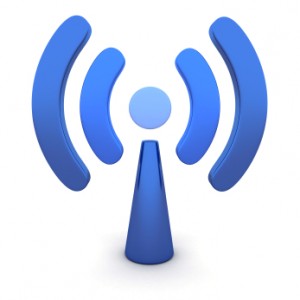What is Bluetooth 4.0?
The fourth version of the popular Bluetooth technology is first seen on the iPhone 4S. If you asked any user, most of them  would be happy with Bluetooth 2.0. Meanwhile, Bluetooth 3.0 applications are very hard to find. If this is the case, why do we need a Bluetooth 4.0?
would be happy with Bluetooth 2.0. Meanwhile, Bluetooth 3.0 applications are very hard to find. If this is the case, why do we need a Bluetooth 4.0?
The Bluetooth wireless standard is a brainchild of Ericsson and was first released in 1994. Since then, it has found its way on mobile devices mostly for use in wireless headsets and headphones. It is also the most common way to send files between phones in short distances. Although not all phones support all available Bluetooth profiles, exchanging data between any phone brands was made easy because of it.
Previous Bluetooth Versions
Versions 1.1 and 1.2 provided the device discovery system that most Bluetooth device users are familiar with. This allowed gadgets to be paired by entering a default or defined password. Version 2.0, released in 2004, increased the data transfer speed from 721 kb/s to 2.1 Mb/s by employing the Enhanced Data Rate (EDR) function. Three years after 2.0, version 2.1 was released that featured simple methods for pairing devices. It is also the version that allows other ways in pairing devices, most notable of which was Near Field Communication (NFC).
The third version of Bluetooth added the ability to use Wi-Fi as another means for transferring data. Bluetooth establishes the connection then routes the data over Wi-Fi, making the transfer faster. It was supposed to add Ultra Wide Band (UWB) support but was discontinued for unknown reasons. Only a few phones supported Bluetooth 3.0 whose features were not really needed during that time.
Bluetooth 4.0 and Bluetooth Low Energy
In 2010 Bluetooth 4.0 was introduced. This version increased the range at which data can be sent, from 10m to 100m. But maybe the most significant change that BT 4.0 brought was Bluetooth Low Energy – the technology that brought a Nokia feature to Apple’s iPhone and Mac products.
Actually, Bluetooth Low Energy is not the first low-power radio system to come out. Before it were Z-Wave and Zigbee whose applications are completely similar to what BT 4.0 offers, such as home automation and appliance control.
Bluetooth Low Energy was originally named Wibree by Nokia when it was introduced in 2001. The proponents of the technology made it clear that it can be used to send data intermittently for a long time, consuming power in the range of 0.01 to 0.5W. This and the quick connection set-up times allow BT LE devices to run on a small battery lasting for months.
Bluetooth Applications
One of the first devices to use Bluetooth 4.0 was a wireless heart-rate monitor. The technology allows a device to use a computer or a phone to connect to its associated web service easily. For instance, the device could send your heart-rate to a website for further studies. Another application includes a smart electricity meter that requests your computer to establish a connection to the power provider’s website.
Bluetooth 4.0’s low power consumption allows it to be installed inside watches. A Bluetooth 4.0-powered watch is useful in many situations. For example, your watch can act as a key to open your phone. This will prevent anyone from opening your phone because the phone will know that it is not you.
Bluetooth SIG, the organization that oversees the Bluetooth standard, expects most of the phones that will ship in 2012 to include this technology. The lower power consumption and decreasing cost of silicon will make BT 4.0 come for free, just like how the old Bluetooth functionality was built into Wi-Fi chips. The SIG also sees BT 4.0 to be used in other areas, including remote controls for home entertainment, temperature monitoring and control, proximity sensing and much more.
The Future of Bluetooth?- Final Thoughts
Although BT 4.0 holds a lot of promise, its rise could be thwarted by similar technologies. Set-top boxer makers are already including both Z-Wave and Zigbee which make their kit a hub for home automation and control systems. Some energy companies are using smart metering with Zigbee modules inside, and mobile phones are using ANT+ for their health and fitness sensors.
But if plenty of new phones will include Bluetooth 4.0, this would give critical mass for other devices to follow suit. Whether you will be using it to monitor your blood glucose soon will depend on the race between Bluetooth SIG and its competitors in publishing profiles for device makers.
LX is an award-winning electronics design company based in Sydney, Australia. LX services include full turnkey design, electronics, hardware, software and firmware design. LX specialises in embedded systems and wireless technologies design.www.lx-group.com.au
Published by LX Pty Ltd for itself and the LX Group of companies, including LX Design House, LX Solutions and LX Consulting, LX Innovations.






